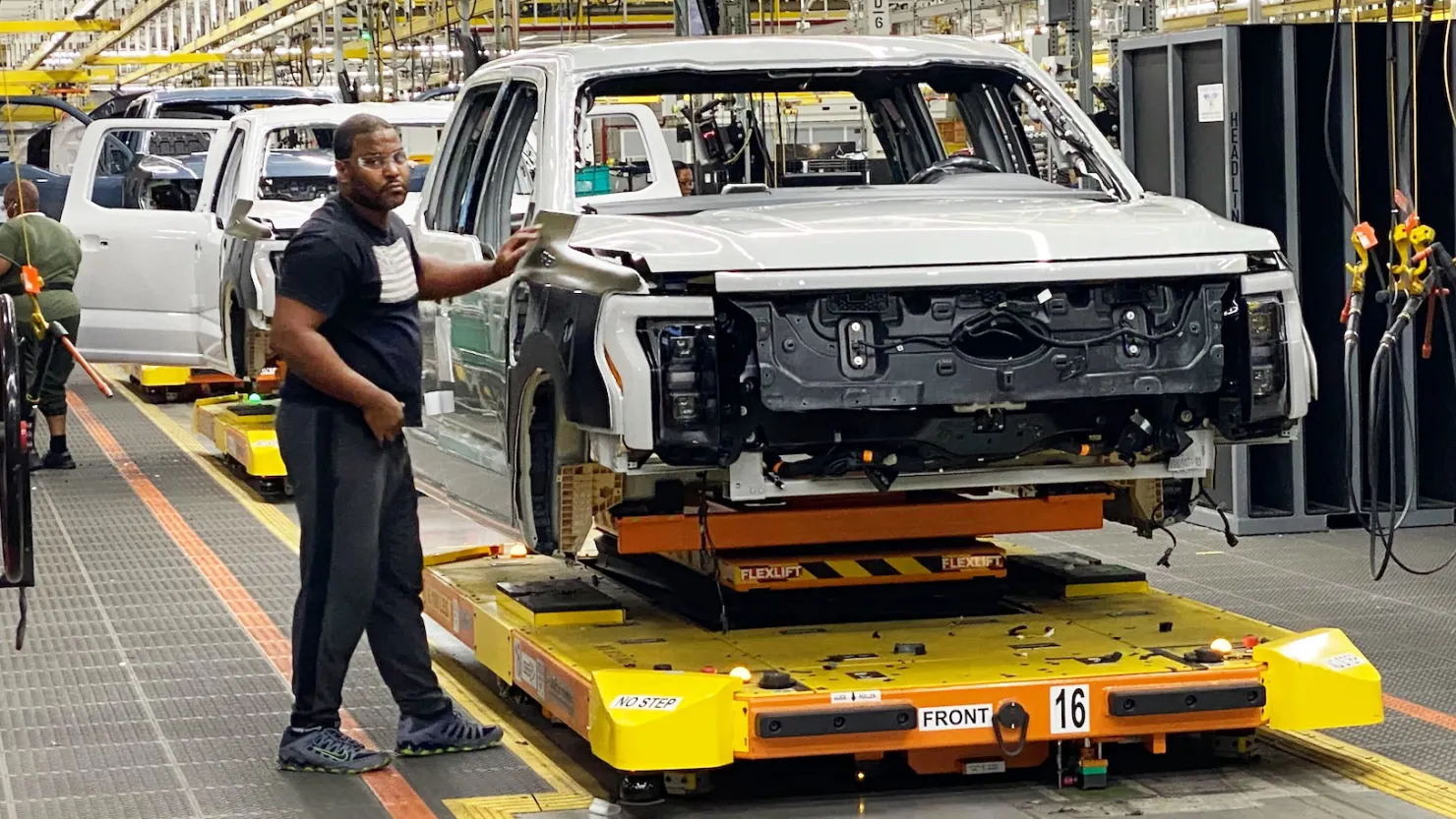Ford Motor Company has announced a temporary halt in the production of its all-electric F-150 Lightning, set to begin on November 18 and extend through January 6 at the Rouge Electric Vehicle Center in Michigan. The seven-week production pause, which includes previously scheduled holiday downtime, is intended to address inventory surpluses and work toward profitability for the electric pickup model. Approximately 730 hourly employees at the plant will face temporary layoffs, although not all will be affected for the entire duration of the production pause.
Ford’s decision reflects broader challenges within the electric vehicle (EV) market. Despite an 86% increase in F-150 Lightning sales this year, consumer demand has not met initial projections due to the high costs of EVs and slower-than-anticipated adoption. Ford has also subsidized sales to stimulate demand, including a program offering dealers up to $1,500 for each 2024 F-150 Lightning ordered through Ford’s new regional electric vehicle distribution centers. Additionally, Ford’s EV division, Model e, is expected to incur about $5 billion in losses this year.
The F-150 Lightning, initially hailed by Ford CEO Jim Farley as potentially transformative for the brand, has seen planned production output scaled back to reflect changing market dynamics. Ford executives emphasize that the next generation of EVs will be more cost-efficient, with a target of launching only those vehicles that can achieve profitability within their first year.
Ford’s inventory levels further highlight the issue, with Cox Automotive reporting a supply of 112 days’ worth of new vehicles overall as of September’s end. The F-150, including both electric and traditional models, was at 100 days of supply, while other Ford EV models like the Mustang Mach-E and E-Transit van had supplies of 128 and 112 days, respectively. Ford’s target inventory range is between 50 and 60 days.
The F-150 Lightning’s temporary production halt reflects the automaker’s efforts to balance EV supply and demand, control costs, and achieve sustainable growth within its electric fleet. This pause also signals a broader trend in the industry, as manufacturers grapple with the economic realities of the EV market and adjust strategies accordingly. By focusing on inventory management and profitability, Ford aims to optimize its EV offerings for future growth and align production levels with evolving consumer demand.
READ MORE:
